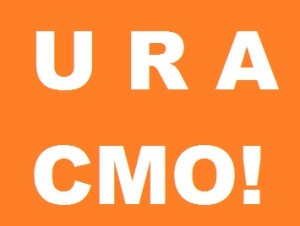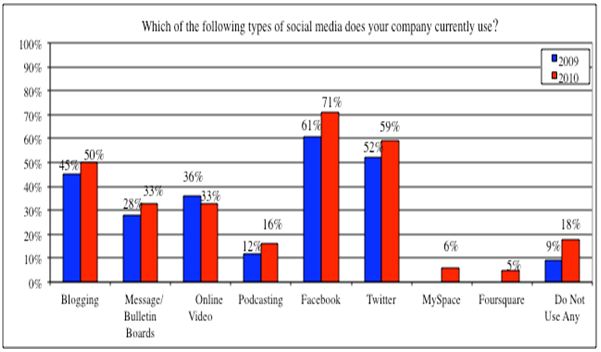
Last year at SXSW, Foursquare founder Dennis Crowley joined Frank Eliason (previously @comcastcares), Altimeter Group’s Jeremiah Owyang and me on stage to discuss the shifting landscape of social engagement. While I focused on the sociology of engagement and the impact it is having on culture and society, I also sought to balance the conversation by demonstrating the impact of digital actions and interaction between people and businesses.
Whether intentional or not, Crowley and team unlocked the elusive gates that separated the last mile of engagement between local businesses and their customers and prospective patrons. The rising generation of social consumers embraced geo-location services to share physical experiences, connect with their social graph in the real world and also earn rewards for their check-ins, which is rapidly becoming a powerful form of peer-to-peer endorsements and recommendations. Crowley, quite literally gamed the system that was once solely controlled by giants such as the Yellow Pages, Google and Yelp. The Foursquare team bridged the gap between people and places both online and offline.
Later in the year, we caught up again for a cover story I wrote for Entrepreneur magazine.
We discussed how Foursquare redefined the role of the patron and the relationship between businesses and customers.
“The network started to take on a life of its own,” Crowley said in the interview for Entrepreneur. “Foursquare gave everyday people, venues and local merchants a voice. It opened the doors for businesses to see a whole new way of seeing their customer.”
In the Game of Foursquare, What’s the Score?
Foursquare’s rapid rise from New York startup to media darling is quite remarkable. If you judge the service by its badge, or shall we say badges, you might miss the bigger picture. The essence of Foursquare is powered by its community. In this mobile Utopia, people earn positions of prominence by exploring and improving the experiences of other explorers. It’s a form of social hierarchy that’s alluring and rewarding. For a more recent example, it’s not unlike the fledgling blog darling Quora. The ties that bind its users are woven through social ties and recognition that’s earned through participation and contribution.
Foursquare continues to evolve and the team recently released an infographic that visualized collective achievements and user behavior. To make it easier to consume and also appreciate its progress, let’s review some key milestones.

In 2010, Foursquare experienced 3,400-percent growth over 2009, reaching 6,000,000 users to date.

This year, Foursquare received over 380 million check-ins.

The largest swarm to date is the Rally to Restore Sanity, which saw over 35,000 check-ins on October 30th, 2010.
A Day in the Life

The team also revealed a “day in the life” of the typical Foursquare user.
Most people check-in to eateries, gaining momentum at 8 a.m. every day and thinning out just after midnight.
Check-ins to work or the office also follow a similar pattern. Work days typically seem to see the greatest volume of check-ins between 7 – 8 a.m. continuing to midnight.
Read more
 Your content is the most important aspect of your blog. But, how you deliver and present your blog posts often dictate whether a note a post will get read.
Your content is the most important aspect of your blog. But, how you deliver and present your blog posts often dictate whether a note a post will get read.




 Every once in a while, when we least expect it, life gives us a new turn, a twist and sometimes a shake. And we often don’t know what to do. Three weeks ago I was told something that would once again in the past 1 1/2years change my life and my perceptions on how short and valuable life is. But what is most important, once I heard the news and got into my car to head home to soak it all in, my Garmin said something I had heard a million times before ( see I am geographically challenged and need my Garmin for directions) she said “recalculating.”
Every once in a while, when we least expect it, life gives us a new turn, a twist and sometimes a shake. And we often don’t know what to do. Three weeks ago I was told something that would once again in the past 1 1/2years change my life and my perceptions on how short and valuable life is. But what is most important, once I heard the news and got into my car to head home to soak it all in, my Garmin said something I had heard a million times before ( see I am geographically challenged and need my Garmin for directions) she said “recalculating.” If you’ve visited a bookstore recently, you probably noticed there’s been a lot written lately on the subject of design thinking. Whether or not you think it’s just another trendy buzzword, the topic has been gaining momentum in the last 5 years and is beginning to spark genuine interest from both designers and business executives alike.
If you’ve visited a bookstore recently, you probably noticed there’s been a lot written lately on the subject of design thinking. Whether or not you think it’s just another trendy buzzword, the topic has been gaining momentum in the last 5 years and is beginning to spark genuine interest from both designers and business executives alike. 
 Blogging, engaging, listening to customers on Facebook or Twitter are all a necessary component of being online. But doing these things won’t help you actually make sales using social media. The idea of following customers into social spaces is smart. But incomplete without a means to capture attention and ultimately convert it into demand – leads and sales. Could the answer to selling more with social media be found in starting conversations that are worth having? And could conversing in ways that generate questions that you have the answers to be a better way to generate customer inquiries? Here’s my advice on making each social media marketing budget dollar go further in 2011.
Blogging, engaging, listening to customers on Facebook or Twitter are all a necessary component of being online. But doing these things won’t help you actually make sales using social media. The idea of following customers into social spaces is smart. But incomplete without a means to capture attention and ultimately convert it into demand – leads and sales. Could the answer to selling more with social media be found in starting conversations that are worth having? And could conversing in ways that generate questions that you have the answers to be a better way to generate customer inquiries? Here’s my advice on making each social media marketing budget dollar go further in 2011.
